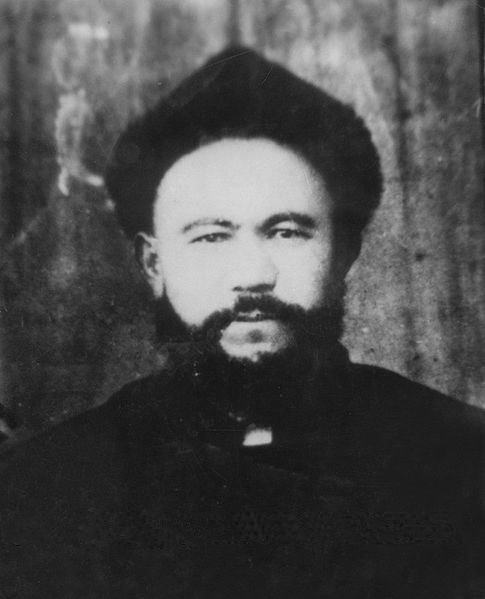Preceded by Office instituted Religion Islam Role Political leader | Succeeded by Office abolished Name Sabit Abdulbaki | |
 | ||
Political party Committee for National Revolution/ East Turkistan Nationalist Party Died 1943, Aksu, Xinjiang, China Party Committee for National Revolution Similar People Ma Zhongying, Hoja‑Niyaz, Muhammad Amin Bughra, Jin Shuren, Sheng Shicai | ||
Sabit Damulla (Chinese: 沙比提大毛拉) (ثابت دام الله عبد الباقي) (1883-1934) (سابىت داموللا عبدالباقى) was a Uyghur independence movement leader who led the Khotan rebellion against the Xinjiang Province government of Jin Shuren, and later the Uyghur leader Hoja-Niyaz. He is widely known as the only prime minister of the short-lived Turkish Islamic Republic of Eastern Turkestan from November 12, 1933 until the republic's defeat in May 1934.
Contents
Life
Sabit (Sawut) Damulla Abdulbaqi was born in 1883, in county of Atush in the Kashgar vilayet, where he received religious education. In 1920s he graduated from Xinjiang Academy of Politics and Laws in Urumqi (later becoming Xinjiang University), that was founded by Governor Yang Zengxin in 1924 and originally performed courses in Chinese, Uyghur, and Russian. After completing university, he visited the Middle East, touring Egypt, Turkey, and Saudi Arabia; he also visited the Soviet Union, where he continued his studies. In 1932 he returned to Xinjiang through India, where he joined Emir Muhammad Amin Bughra in preparing a rebellion in Khotan district. Sabit Damulla was convinced that the Islamic world was not interested in supporting Uyghur independence, and so he turned to the Great Powers instead.
Achievements
Between November 12, 1933 and February 6, 1934 he was selected the prime minister of the short-lived Turkish Islamic Republic of East Turkestan (TIRET) in Kashgar. While Sabit Damulla Abdulbaki favoured the co-official "Republic of Uyghurstan" moniker, Muhammad Amin Bughra opposed it, considering that to create a broad anti-Chinese and anti-Tungan front in Xinjiang, all of the Turkic peoples should be called "Turks", not only Uyghurs. Sabit Damulla was also behind a creation of Independent Government in Khotan on March 16, 1933, which he proclaimed together with Emir Muhammad Amin Bughra. Later this Government expanded its authority to Kashgar and Aksu through the "Eastern Turkestan Independence Association" and contributed to the proclamation of a republic in the Old City of Kashgar on November 12, 1933. Khoja Niyaz Khaji, the leader of Kumul Rebellion in 1931, was invited by Sabit Damulla to Kashgar to assume presidency of the self- proclaimed republic.
Death
Contemporary sources say that Abdulbaki was captured by Khoja Niyaz in Aksu, then delivered to Governor Sheng Shicai. He was executed by hanging in June 1934 in Urumqi. Later sources allege that he was imprisoned by Sheng in Urumqi, where he traded his translation skills for better conditions in his cell. Fellow Chinese Muslims such as Kuomintang officer Liu Bin-Di provided him the Koran and other Arabic and Chinese Islamic texts to be translated into Uyghur. (The establishment of Islam in China in 650 stemmed from the delivery of a Quran by Caliph Usman to Tang Emperor Gaozong in 650 and headed by Envoy Sa'ad ibn Abi Waqqas, one of Muhammad's first companions) Liu had been dispatched from Urumchi to pacify the Hi region, but he was too late. It's unknown if this job was finished, Liu Bin-Di himself was shot dead by rebels in Ghulja in November, 1944 during revolt, that led to establishment of Second East Turkestan Republic on November 12, 1944.
